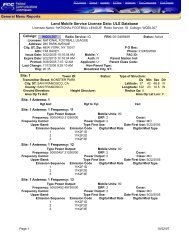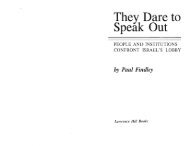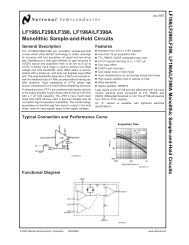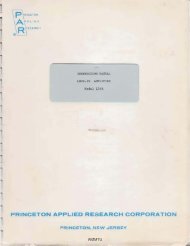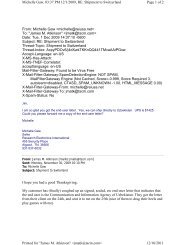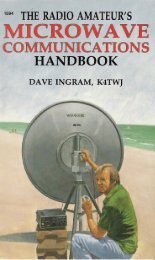A License Plate Recognition and Speed Detection System - Index of
A License Plate Recognition and Speed Detection System - Index of
A License Plate Recognition and Speed Detection System - Index of
Create successful ePaper yourself
Turn your PDF publications into a flip-book with our unique Google optimized e-Paper software.
As with any new technology affecting people’s lives, automated traffic enforcement systems<br />
have been the object <strong>of</strong> various legal challenges, which we’ll briefly discuss in the next section.<br />
Legality <strong>of</strong> LPR/traffic violation systems<br />
Disclaimer: In this section we discuss the legality <strong>of</strong> license plate recognition<br />
systems. Since we are not lawyers, the material presented here is not to be construed to be<br />
legal advice, nor is it intended to be an exhaustive treatment <strong>of</strong> the subject matter.<br />
Research has shown that some <strong>of</strong> the major causes <strong>of</strong> motor vehicle accidents are<br />
speeding <strong>and</strong> failure to obey traffic signs <strong>and</strong> signals, i.e. stop signs <strong>and</strong> red lights.<br />
In 2002, over thirteen thous<strong>and</strong> people were killed in speed related motor vehicle accidents,<br />
which resulted in a cost to the American taxpayer <strong>of</strong> $10 billion. Statistics for 2003 have shown<br />
more than 176,000 people were injured by motorists that ran stop lights. This has lead to an<br />
additional $14 billion dollar tax burden. This is above <strong>and</strong> beyond all the pain <strong>and</strong> suffering<br />
resulting from these accidents.<br />
The Insurance Institute <strong>of</strong> Highway Safety conducted a 9-month study using photo radars in<br />
Scottsdale, Arizona. The study was confined to an 8-mile stretch <strong>of</strong> the 25-mile long highway<br />
known as “the Loop”. Prior measurements showed fifteen percent <strong>of</strong> the motorists were driving<br />
at speeds < 10 mph above the posted limit. By the end <strong>of</strong> the study period the percentage had<br />
dropped to less than 2%. Similarly, in Montgomery County, MD, the number <strong>of</strong> speeding<br />
motorists dropped by 70%. However, once the program in Scottsdale ended, the average speeds<br />
went up to 69 mph in a 65-mph zone <strong>and</strong> more than 12% <strong>of</strong> the drivers were traveling at 75 mph<br />
or more. As a result <strong>of</strong> such studies <strong>and</strong> in order to prevent the violation <strong>of</strong> traffic laws, the<br />
75





